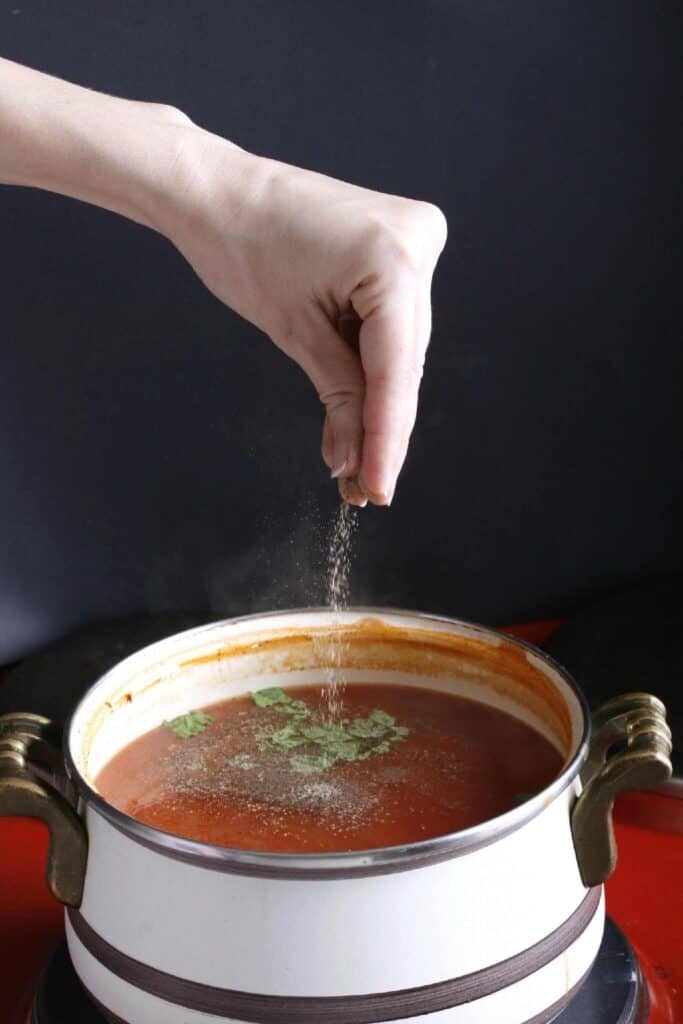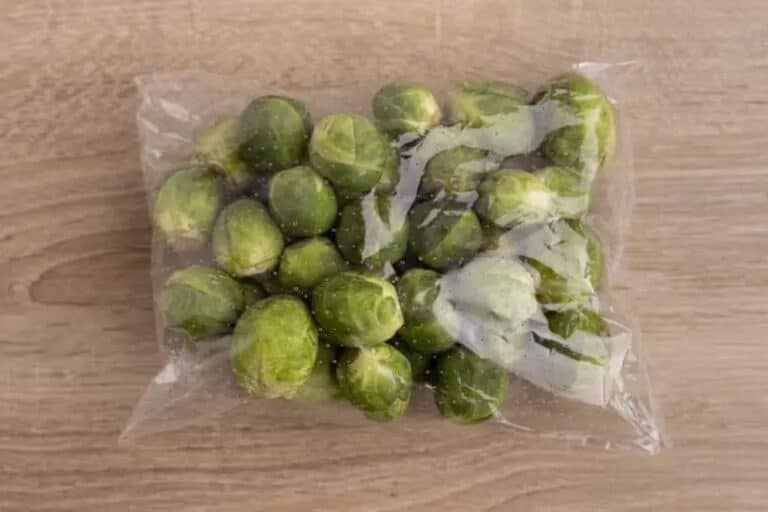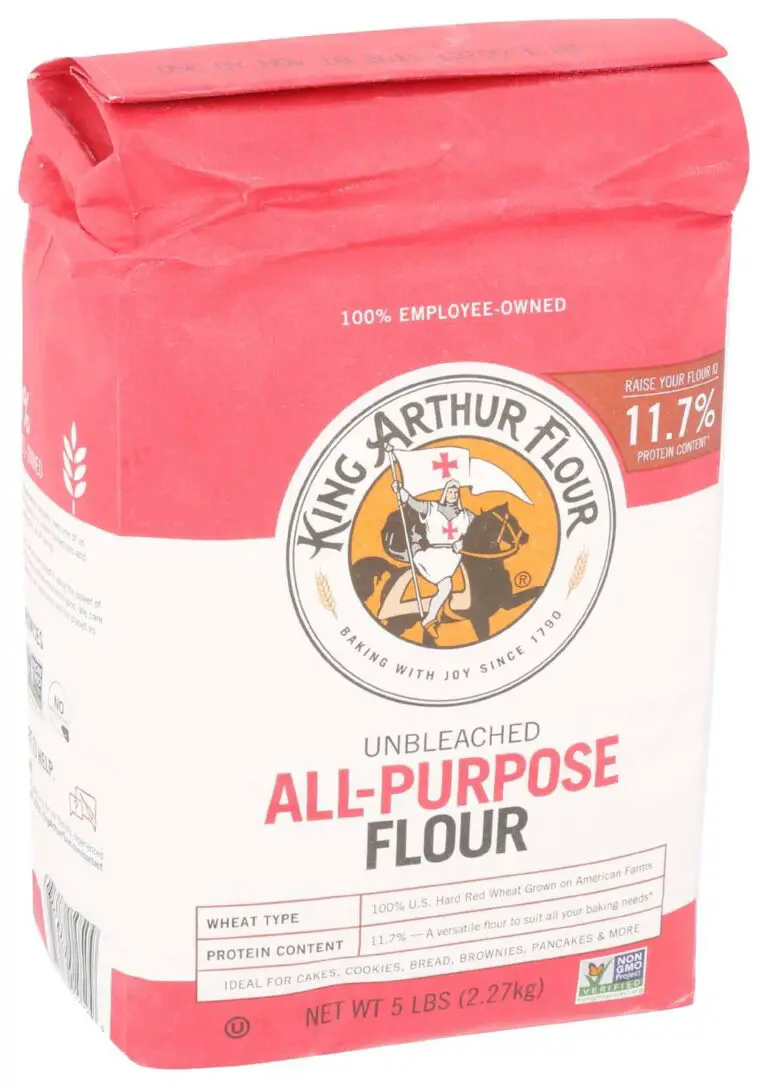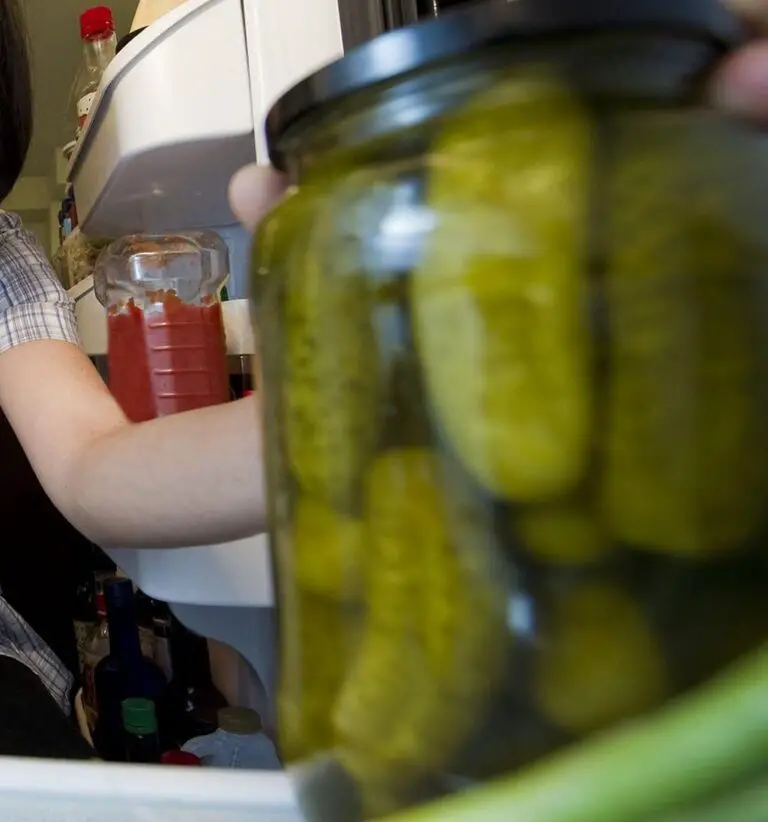What if I Add Too Much Baking Soda to My Tomato Soup?

In the world of cooking, there are a few ingredients that we turn to time and again for their magical properties. These culinary superheroes enhance flavors and aid in texture development. They make our dishes shine. Baking soda is a hero. It’s a humble pantry staple with powerful leavening abilities and countless kitchen applications.
When used wisely, baking soda can work wonders in recipes. It adds a subtle acidity to balance out overly sweet or rich flavors. It makes baked goods rise to fluffy perfection. It even helps tenderize tough cuts of meat.
But just like any superhero gone rogue, too much of this powdery white knight can wreak havoc on your culinary creations. Today, we dive into the depths of excess baking soda usage in tomato soup. Disaster lurks if you don’t approach this unsuspecting dish with caution.
Put on your apron and join us on this adventure. We’ll unravel the secrets behind mastering tomato soup without falling victim to unruly bubbles or unappetizing aftertastes.
The Role of Baking Soda in Tomato Soup
Baking soda is a versatile ingredient that plays many roles in the culinary world. While it’s commonly used as a leavening agent, it can also have surprising effects on flavors when added to certain dishes. In tomato-based soups specifically, baking soda can be employed to balance out acidity and enhance overall taste.
When tomatoes are cooked for an extended period, their natural acidity tends to intensify, resulting in a tangy and sometimes overpowering flavor. This is where baking soda steps in as a delightful solution. By adding just a pinch of baking soda to your tomato soup, you can neutralize some of the acid present without dulling its vibrant essence.
By doing so, you’ll find that the sweetness of tomatoes becomes more pronounced, while any bitter or acidic notes are subtly mellowed out. The result? A beautifully balanced bowl of tomato soup bursting with rich flavors will leave your taste buds begging for more. But remember, moderation is key!
Adding too much baking soda can lead to unintended consequences that we’ll explore further ahead. So let’s take caution before we sprinkle—or perhaps pour—this magical white powder into our pots!
What if I Add Too Much Baking Soda to My Tomato Soup?

We’ve all had those moments in the kitchen. A little mishap occurs, and suddenly our culinary masterpiece takes an unexpected turn. One common blunder is adding too much baking soda to tomato soup. While it may seem like a harmless mistake, the consequences can be quite significant.
Here are some telltale signs that your culinary creation might be veering off course:
1. Bitter and Soapy Aftertaste
First and foremost, an excessive amount of baking soda can drastically alter the taste of your tomato soup. The overpowering alkaline taste of baking soda will dominate your dish. It won’t blend harmoniously with other flavors. The result? A bitter and unpleasant aftertaste that lingers on the palate.
2. Loss of Tomato Essence
An excess of baking soda can overpower the natural tomato flavor, turning your soup into a bland concoction.
3. Unpleasant Aroma
A strong, chemical-like smell emanating from your pot is a clear indicator that you might have added more baking soda than needed.
4. Changing Visual Clues
In addition to its impact on taste, using too much baking soda can cause undesirable color changes in your beloved tomato soup. Tomato-based dishes have their own vibrant hues that we love to admire before taking that first spoonful.
However, when excess baking soda enters the equation, these beautiful red colors can transform into a dull brownish shade or even an unappetizing gray tone. And let’s face it, visual appeal plays a crucial role in our enjoyment of food!
How to Correct Excessive Addition of Baking Soda

1. Dilution Method
Don’t worry if you find yourself with a pot of tomato soup that has too much baking soda in it! You can easily salvage the situation through the dilution method. By adding additional ingredients to balance out the alkalinity, you can restore your tomato soup to its flavorful glory.
To begin this correction process, consider incorporating more water into the mixture. To counteract the alkaline taste that excessive baking soda causes, tomatoes’ natural acidity will be helpful.
Alternatively, if you prefer a thicker consistency in your soup, try adding vegetable broth or stock. Not only does this dilute and balance out the unwanted flavor, but it also adds depth to your dish.
2. Acidic Counterbalance Technique
Another effective way to fix excessively alkaline-tasting tomato soup is by using an acidic counterbalance technique. By introducing an acidic ingredient such as vinegar or citrus juice into your soup, those unwelcome flavors will be neutralized.
For best results, choose a mild vinegar like apple cider vinegar or white wine vinegar and add it gradually until you achieve a desirable taste. Similarly, freshly squeezed lemon or lime juice can work wonders at bringing equilibrium back to your dish. Start with a small amount and adjust according to your preference; just be careful not to overpower the other flavors in your soup!
3. Add Potatoes
Potatoes, those humble kitchen champions, possess a culinary magic trick. They absorb excess salt or alkalinity with unmatched prowess. Imagine them as flavor sponges, ready to rescue your soup from any seasoning misstep. The next time your soup leans a bit too salty or ventures into alkaline territory, enlist the potato brigade.
How to Use Potatoes as Culinary Heroes
Dice up a few slices or chunks of potato and introduce them to your simmering soup. This step is your culinary insurance. It ensures that the potatoes work their magic without stealing the spotlight from other ingredients. Allow the potato pieces to simmer alongside the rest of your soup ensemble.
4. Go Creamy
If the alkaline taste is still overpowering, consider introducing creamy elements. A swirl of heavy cream, a dollop of sour cream, or a splash of milk can mellow out the harshness.
5. Balance with Sweetness
A touch of sweetness can counteract the alkaline taste. Consider adding a pinch of sugar or honey, but be cautious not to swing too far in the opposite direction.
With these five techniques at hand, you’ll never have to worry about salvaging an overly alkaline batch of tomato soup again! Remember that cooking is all about experimentation and learning from mistakes. Keep exploring new culinary horizons armed with these helpful tips for any future mishaps!
Preventive Measures: Keeping Excess Baking Soda at Bay
Now that you understand the consequences of using too much baking soda in tomato soup, let’s explore some preventive measures. This way, you’ll never find yourself in a bubbling pot of regret again.
First and foremost, it’s important to read the recipe carefully and follow the measurements closely. Baking soda is a powerful ingredient, so even a slight miscalculation can lead to disaster.
Another helpful tip is to start with small amounts of baking soda and gradually increase if needed. This way, you have more control over the flavor and texture of your soup without risking an overpowering taste or excessive fizziness. Remember, it’s always easier to add more baking soda than try to undo its effects once it’s already dissolved in your dish.
Alternative Options: Finding Safer Solutions
If you’re looking for alternative ways to achieve similar results without using lots of baking soda, fear not! There are several options available that can give your tomato soup the desired tanginess and balance without compromising on taste or texture.
One popular choice is adding a splash of vinegar or lemon juice instead. These acidic ingredients can provide a similar level of acidity as baking soda, but in a controlled manner. Start with just a few teaspoons at first, tasting as you go until you achieve the desired flavor profile.
For those who prefer a creamier consistency in their tomato soups, consider substituting heavy cream or coconut milk for part or all of the liquid called for in the recipe. This will impart richness while toning down any excessive acidity that may be present.
By being mindful during preparation and exploring alternative options when necessary, creating deliciously balanced tomato soups becomes both exciting and foolproof!
| Related: How to Reduce Acidity in Chili |
Conclusion:
In summary, it’s important to understand the consequences of adding excess baking soda to tomato soup. It can affect both the taste and texture of your dish. A small amount of baking soda can enhance flavors and reduce acidity in tomato-based recipes. However, using too much can lead to undesirable outcomes.
We’ve learned that using too much baking soda in tomato soup results in an unpleasant metallic aftertaste. It also gives the soup a fizzy texture that disrupts its smoothness and causes a visually unappealing color change. These outcomes may be disappointing when encountered during cooking. However, there are ways to rectify the situation.
You can salvage your culinary creation by diluting the excessive baking soda with additional liquid, such as water or broth. Adjust other seasonings accordingly. You can also combine it with another batch of unsalted soup without adding any baking soda. It’s essential to remember that moderation is key when using baking soda in tomato soup recipes—a little goes a long way!
So next time you find yourself reaching for that trusty box of baking soda while preparing your favorite tomato-based dishes, keep these tips in mind. Happy cooking!






